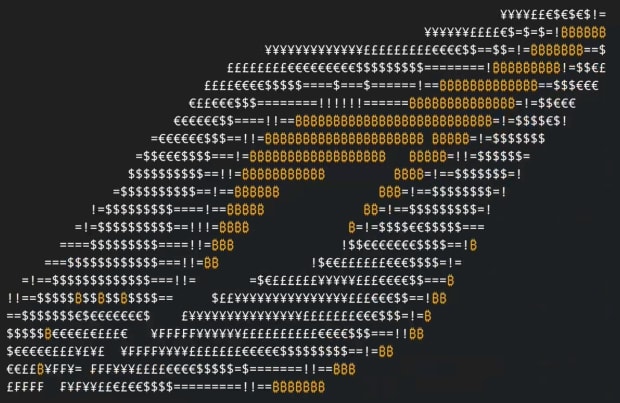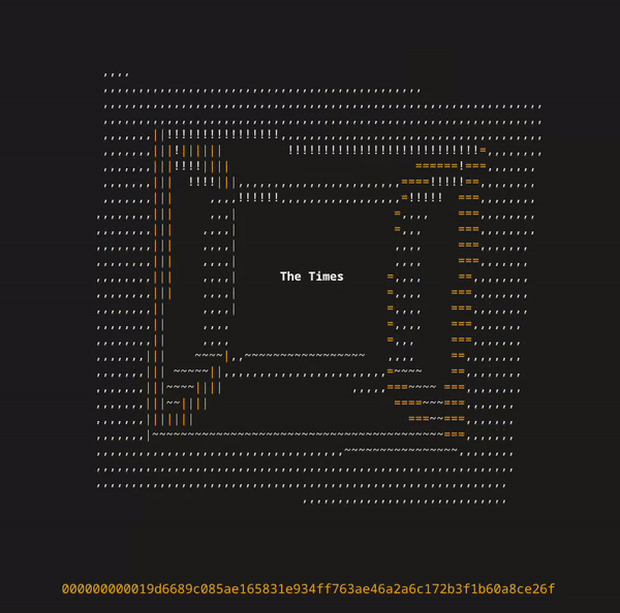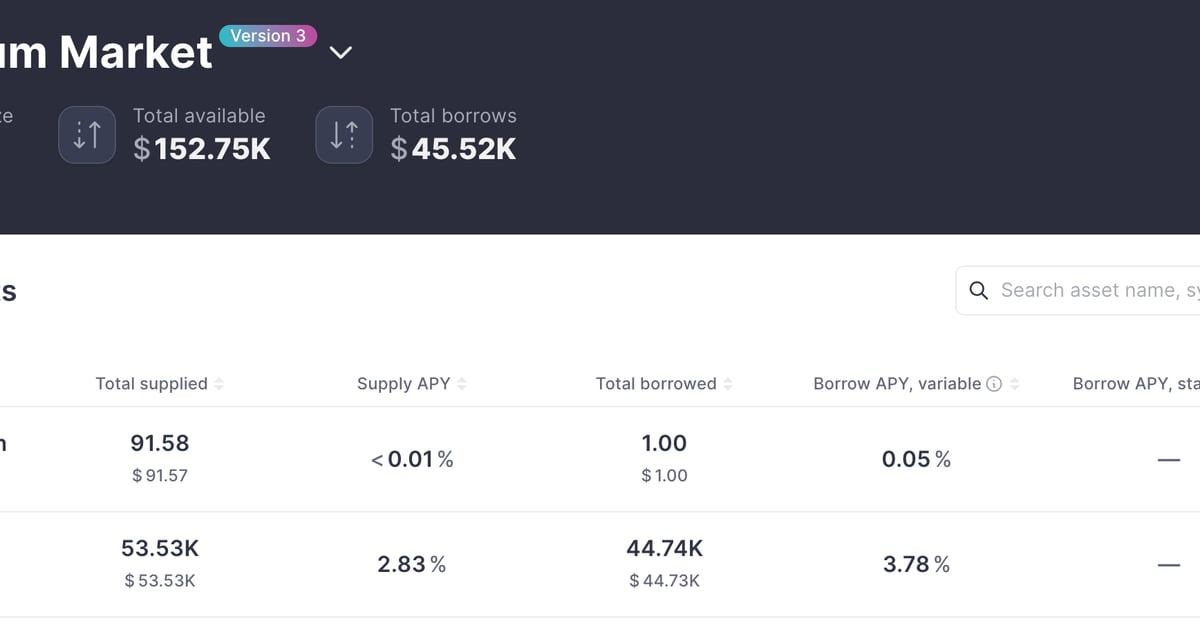The Ordinal Loops project is designed to push artistic activism and help end fiat through the latest innovation on Bitcoin’s blockchain.
This is an opinion editorial by T, a member of the Ordinal Loops team.
It has been almost a month since Ordinals truly came to light and Bitcoin has not been the same since. For some background, this article by Stephan Livera introduces the basic concepts and delves into the technical areas as well as the political challenges presented by Ordinals. While there are some views in it that can be contested and assumptions made that cannot be predicted, the article provides a fantastic entry point into the world of data inscription.
The first days of Ordinal building were messy, with Bitcoiners spending hours telling people how the protocol works, navigating through the ways to run their own nodes and inscribing art. One has to wonder how many orange-colored light bulb moments have happened recently, but judging from the incoming amount of requests and peer-to-peer (P2P) conversations, it has to have been a lot. Looking at data since the end of January, according to bitnodes.io, the Bitcoin node count has grown by more than 28% and Taproot adoption increased to almost 10% with a dramatic push in the recent days, as depicted by Glassnode. Utilization of the most recent soft fork driven by Ordinals has been a tremendous success and there’s no reason to expect it to slow down.
But, due to the elements of art and creative activism that Ordinals bring to Bitcoin, there is still an urge to look at this technological evolution from a different standpoint: as a cultural advent in Bitcoin’s expansion and continuous growth.
Introducing Ordinal Loops

With that, allow us to present Ordinal Loops (OL), a review of Bitcoin’s contemporary existence, along with some historical precedence, in the form of 21 ASCII-format, low-byte-size artifacts (or Ordinal inscriptions), guiding novel explorers from different streams to grasp the fundamental pillars of this important discovery.
In the moment of realization and the introduction of energy that came with the inception of Ordinals, the OL team would be remiss not to participate with a project of our own meant to support the growth of Bitcoin’s network effects, including its security budget.
Before forming OL, our team was focused on the organization of Bitcoin meetups and other cultural events, typically culminating in the creation of NGO-supporting art. Then, Ordinals offered a new way ahead, but also some novel challenges due to a lot of incoming traffic and interest from people and projects that were previously unaware of Bitcoin’s conceptual framework.
Chapter One: Do Not Fiat
Observing the Loops, chapter one, called “Do Not Fiat,” reflects on one of the core aspects of the existence of Bitcoin: emergence of a better and more inclusive monetary system. Objects zero to six within this chapter were shaped chronologically from the early, peaceful intersections to the cataclysm and ultimate preview of the future where the depicted Bitcoin “vulva” consumes all of the fiat monies. With such a vision, Bitcoin defeats ever-lasting financial oppression and slavery. Such an eternal battle can be observed in a progressive fashion, directed to the contemporary state of our current existence with grand but painful expectations ahead.
These Loops were inscribed in the first 500 Ordinal inscriptions, ensuring that ASCII motions and the wizardry of mathematics is reflected in the Bitcoin blockchain. As of this writing, every single inscription but “Object 4” has been taken into possession by a new owner via transparent Discord auctions.
Community Considerations
The OL holder list is designed to have influence over decisions made by the OL team, hopefully pushing creative activism into a new paradigm that has not been explored in other Ordinal projects or through the Bitcoin protocol. But with the realization that the artwork of chapter one might not be affordable to everyone, a solution has been proposed in the public discourse around the project: “Object 4” became the very first artifact owned by what we call “SATDAO,” consisting of 21 OL community members each holding a single key to multisignature ownership over the given UTXO. Participation in SATDAO remains open and subject to change.

Because the fight against fiat will only succeed if we reinforce our barricades, OL has also continuously funded the Open Sats Legal Defense Fund, Brink, the Bitcoin Policy Institute and Casey Rodarmor’s 21st OpenDime over the period of its chapter one auctions. Such activities and current holdings are transparently disclosed in the Discord’s treasury channel with respective transaction hashes included.
It is not only the best move to orange pill new entrants brought in by the excitement around Ordinals, but Ordinals also offer the chance to protect and reinforce developer resources or experiment with novel forms of community ownership. Digital art has the capacity to further this empowering wave of creative activism and deconstruct the current narratives.
And, as always, actions speak louder than words:
Chapter Two: Roots Of Immutability
Chapter two of OL intersects into the current period and is meant to allow the observer to step back into Bitcoin’s historic blocks, which have been built on the shoulder of giants.
“Block 0” is an homage to Satoshi Nakamoto themselves, bridging the fiat battle with “The Times,” calling out the brokenness of the current world order. The “Block O” inscription has been sent directly to the “1A1zP1eP5QGefi2DMPTfTL5SLmv7DivfNa” genesis address, because we are all Nakamoto.

“Block 1” pays tribute to one and only Hal Finney, showcasing the hash of the block containing his receiving transaction from Nakamoto. The abstract art of this block relates to the dawning impact of ALS — a neurodegenerative disease that negatively impacted Finney’s health. The upcoming auction for this Ordinal plans to distribute 58% of the funds received to the ALS Association, furthering this research on behalf of Finney’s wife, Fran Finney. It will be unveiled at the upcoming NFT Paris event to draw a wider interest in the Ordinals movement.

“Block 2” depicts the block height hash of Laszlo Hanyecz’s pizza transaction. With Hanyecz being an advanced GPU miner, it is our adage to mine the shift of narratives.
“Block 3” celebrates SegWit, removal of transaction malleability and UASF action from the Blocksize Wars, as well as the gateway to Lightning Network, which has its own altar in “Block 4.” Following through, Taproot finds itself abstracted into the cryptographic curves of Schnorr signatures as “Block 5 5” raises a glass to the coordinated soft fork activation agreement with the enhancements for a privacy-focused tech stack that it brought.
As the most rare aspect of OL, “Object 6” is the ultimate bow to Ordinals, exploring the convulsion of square and round shape objects supplemented with hyper-futuristic synth waves made by c7rr3n7 with an artistic devotion to create uniqueness — uniqueness in the sense of the opportunity that Ordinals has delivered.
We invite the reader to consider what Ordinals can do for Bitcoin and to open themselves to the new path ahead. Digital art with digital ecosystems is just the beginning. Bitcoin is freedom.
This is a guest post by T. Opinions expressed are entirely their own and do not necessarily reflect those of BTC Inc or Bitcoin Magazine.










